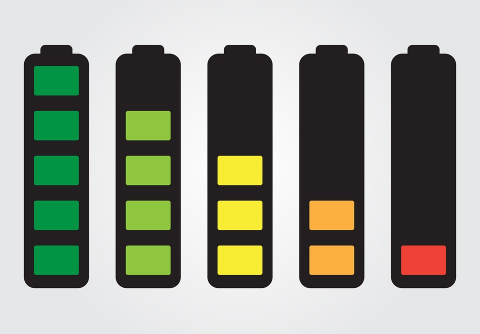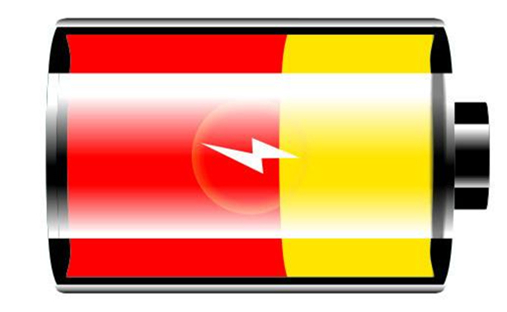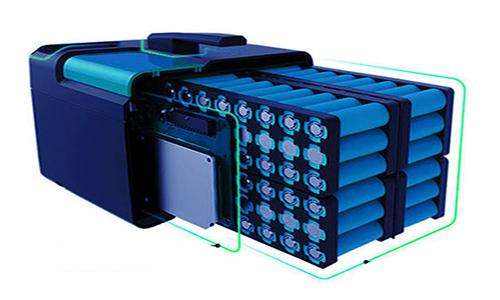Can You Overcharge a Li ion battery?
May 11, 2019 Pageview:2243
Li ion
Lithium-ion battery or Li-ion battery is abbreviated as LIB. This is a type of rechargeable battery first proposed by chemist M Stanley Whittingham at Exxon in the 1970s. Recently, lithium-ion batteries are common and also available for common used for portable electronics and electric vehicles and are growing in popularity for military andspecial applications.

Lithium ion Battery Charge Circuit
The cells of Li-Ion are probably the most complex when it comes to charge them because these cells are quite vulnerable to overcharging, and tend to get hot at unfavourable conditions. The Li-Ion cells have ability to accept charge at a quick and an efficient rate. Li-Ion cells have the bad reputation of being too sensitive to unfavourable inputs such as high voltage, high current and most importantly over charging conditions. The first thing that happens to the cell is a rise in its temperature and in the proposed circuit concept we utilize this characteristic of the device for implementing the required safety operations where the cell is never allowed to reach high temperatures keeping the parameters well under the required specs of the cell.
In the batteries, lithium ions move from the negative electrode to the positive electrode during discharge and back when charging. The Li-ion batteries use for an intercalated lithium compound it’s as one electrode material compared to the metallic lithium used in a non-rechargeable lithium battery. The batteries have a high energy density, no memory effect and low self-discharge. They can be a safety hazard since they contain a flammable electrolyte, and if damaged or incorrectly charged can lead to explosions and fires. Samsung was forced to recall Galaxy Note handsets following lithium-ion fires and there have been several incidents involving batteries on Boeing 787s.
The Performance of its Cost and Safety characteristics vary across LIB types. These are handheld electronics mostly use LIBs based on lithium cobalt oxide (LiCoO2) which offers high energy density but presents safety risks especially when damaged. The Lithium iron phosphate(LiFePO4) and the lithium-ion manganese oxide battery (LiMn2O4, Li2MnO3 or LMO) and lithium nickel manganese cobalt oxide (LiNiMnCoO2or NMC) offer lower energy density but It will be long lives and less likelihood of fire or explosion. These types of batteries are widely used for electric tools, medical equipment and other roles. NMC, in particular, is a leading contender for automotive applications.
Research areas for lithium-ion batteries include life extension, energy density, safety, cost reduction, and charging speed among others. Research has also been under way for aqueous lithium-ion batteries, which have demonstrated fewer potential safety hazards due to their use of non-flammable electrolytes.
The cells of Li-ion are probably very complex when it comes to charging them because these cells are quite vulnerable to overcharging and tend to get hot at unfavourable conditions. The following post explains a couple of simple yet a safe way of charging a Li-ion cell which can be easily constructed at home by any new hobbyist.
Advantage of Li-Ion Battery
The advantage of Li-Ion cells is their ability to accept charge at a quick and an efficient rate. However, Li-Ion cells have the bad reputation of being too sensitive to unfavourable inputs such as high voltage or high current and most importantly over charging conditions. When charged under any of the above conditions the cell may get too warm and if the conditions persist may result in leaking of the cell fluid or even an explosion ultimately damaging the cell permanently.
Under any unfavourable charging conditions the first thing that happens to the cell is rise in its temperature and in the proposed circuit concept we utilize this characteristic of the device for implementing the required safety operations, where the cell is never allowed to reach high temperatures keeping the parameters well under the required specs of the cell.

How to Set-Up the Circuit
Initially keep to the central slider arm of the pre-set touching the ground rail of the circuit. Now without connecting the battery switch ON power will be check to the output voltage which would naturally show the full charge level as set by the 700 ohm resistor. Next is that will be very skilfully and gently adjust to the pre-set until the SCR just fires shutting off the output voltage to zero. That's it, now you can assume the circuit to be all set. Connect a discharged battery, switch ON power and check the response, presumably the SCR will not fire until the set thereshold is reached, and cut off as soon as the battery reaches the set full charge threshold.
Conclusion
· The basic criteria that need to be maintained for any battery are: charging under convenient temperatures, and cutting off the supply as soon as it reaches the full charge. That is the basic thing you will need to follow regardless of the battery type. You can monitor this manually or make it automatic under both cases your battery will charge safely and have a longer life.
· The charging/discharging current is responsible for the temperature of the battery, if these are too high compared to the ambient temperature then your battery will suffer heavily in the long run.
· There are a second important factor is never allowing to the battery to discharge heavily. Keep restoring the full charge level or keep topping it up whenever possible. This will be ensured that the battery never reaches its lower discharge levels.
Can I charge a lithium battery with a normal charger?
You should need a charger that is specifically designed for lithium-ion because the voltage and current limits are different for li-ion than for other types of batteries. For instance, the charger has to taper current and stop exactly or right before 4.2V. A charger that can’t do this will indeed by very dangerous when used on lithium-ion cells.
It is technically possible but terribly risky because if you charge just with constant current you would have to observe battery voltage all the time.
The charge to safely you need either power supply that can obey CC/CV charge algorithmic program or specified charger if you would like to charge this battery safely. I have seen some HP laboratory power provides which can safely charge Lithium based batteries by setting voltage limit and using CC/CV algorithm, however, it easier to use specified charger.
But even though you are using charger which is compatible w/ lithium based batteries you should all the time control charging because you never know when charger or battery fails.
Is it OK to leave a lithium ion battery on the charger?
When the battery is charging, positively-charged lithium ions move from one electrode called the cathode to the other known as the anode through an electrolyte solution in the battery cell. That causes electrons to concentrate on the anode at the negative side. When the battery is discharged the reverse happens. These electrons move through circuits that are external to the battery providing juice. The scientists have tweaked the formula of the chemical mix inside lithium-ion batteries to try and get them to last longer, charge faster, and work more efficiently.
The battery charge cycle of discharging and recharging can only repeat a certain number of times. Due to the nature of the chemical reactions happening at the anode and cathode thin layers of insulating atoms form obstructs the electrodes' effectiveness.

How to charge lithium ion battery without charger?
Lithium-ion batteries require a constant charge rate and it should not be fast-charged. If you have lost your Lithium-ion charger or it does not work so don't try it and adapt other chargers. The result of it can be dangerous as the charge rate and it can be above the tolerance of battery.
1.USB Portable Device
The charge to Lithium-ion battery of best way without a charger is by connecting the device your battery powers to a USB cable connected to your computer.
This USB cable can contain it several data and ground wires but also have a built in charge wire and the output is suitable for charging a lithium-ion battery. These USB charging wire can be supplies five volts from your computer with a milliamp current of 100mA to 500mA.
This trick is very simple. To charge your Li-ion battery, all you have to do is to connect the end of the cable that fits the gadget powered by the battery. Make sure that the battery is inside the device and then connect the other end of the cable to a computer’s USB port, a laptop or any other electronic devices. Then turn on the device and observe the gadget to see if the battery is charging.
Step 1 Check the device your lithium-ion battery powers. Most devices have a USB sockets.
Step 2 Insert one end of a USB cable into your device's USB socket. Ensure the lithium-ion battery is inserted in your device.
Step 3 Insert the opposite end of your USB cable in your computer's USB outlet socket. When you turn on to your computer and then your lithium-ion battery will start to charge while in your device. The device will be indicated when the battery charge to it.
2.Charging a Li-ion Battery with A Clip Charger
Clip chargers were very popular back in the days. It is a portable charger that users can adjust the distance of the terminal connectors to suit the battery model to be charged. This type of charger can be difficult to find nowadays, but if you are to get one. It will be a very handy portable device.
Using this kind of charger will require you to take out the battery from the gadget because you will have to mount it on the charging platform. If you have a charger like this, you will have a peace of mind knowing that you can charge your battery whenever you need. The best thing about this kind of charger back in the days is that you can use it to charge a spare battery for your gadget to allow you to quickly replace the battery.
These are some of the most popular ways that you can do to charge gadgets without their proper battery chargers.
- Prev Article: How To Fix Swollen LiPo Batteries?
- Next Article: Overview of Lithium Battery Safety Standards
Leave Message
Hottest Categories
-
Hottest Industry News
-
Latest Industry News









